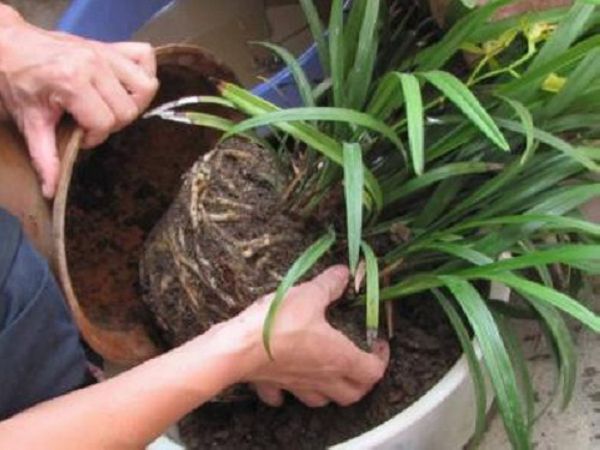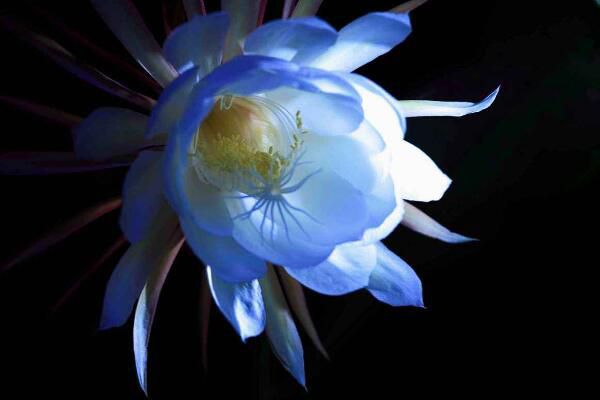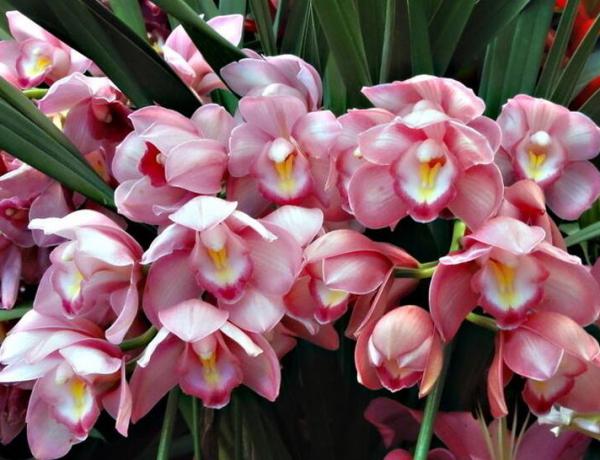When and how do orchids change pots?

In the process of orchid cultivation, there are always some phenomena that hinder the growth of orchids: after several years of potted orchids, there are many plants, too dense roots, insufficient nutrients, plant hardening, diseases and insect pests, and so on, all of which will affect the growth of orchid grass. The only solution is to change pots, split plants and replace plants. Changing the basin can promote the activity of vegetative growth, improve the disease prevention resilience and germination rate of orchid plants, and bring vitality to orchids. If it is not good to change the pot, it will also bring potential crisis to the orchid. Especially for some diseases and weak seedlings, it will accelerate their death.
Therefore, changing pots is an important measure for the conservation of bluegrass, and it is an orchid cultivation technology that every orchid farmer must experience and master. At the same time to remind the orchid also can not often change pots. Because the orchid root and orchid symbiosis, through the orchid to absorb nutrition, too much pot change plant material, will affect the orchid nutrition absorption and normal development. Change the basin, change the plant material, you need to re-produce blue bacteria, adapt to the new environment, orchid seedlings in a period of time in a state of inhibition, stop growing. In particular, old seedlings, weak seedlings, are likely to be tossed to death. Therefore, what should be changed must be changed, and those that do not need to be changed should not be changed as far as possible.
Due to the limitation of potted orchids, orchids grow year after year and the soil nutrients are exhausted. The root system is too dense, there are too many plants, it is difficult to grow luxuriantly, but also unsightly. In order to promote better growth and reproduction, pots and soil must be changed or ramets must be carried out. Changing pots can be carried out in spring, autumn and winter of the year, as long as extreme heat and freezing are avoided.
[under what circumstances do orchids need to change pots]
In general, orchids need to change their pots when they grow in orchid pots for 2 to 3 years, mainly due to the following reasons:
1. Bluegrass is dense. After 2-3 years of reproduction and growth, there are more and more orchid plants in the basin, which not only appears crowded, but also the germination rate of orchids will decrease, and it is easy to grow grass.
2. There are too many Langen. In modern orchid cultivation, granular plants are mostly used, and the roots of orchids are well developed in the basin. After growing for 2 ~ 3 years, there is no room for growth of new roots, and the residual pots of old roots and empty roots not only occupy space, but also are prone to pathogens.
3. The plant material has lost weight. After several years of cultivation, the plant material in the orchid basin has been exhausted and acidified, not only the new seedlings are thin and short, but also the whole orchid is in a weak state.
4. Something is wrong. Orchids in the pot produced a variety of physiological diseases in the process of cultivation, and even infected by bacteria and viruses, resulting in diseased seedlings. In order to save the remaining orchid seedlings, we had no choice but to change the pot and replace the planting material.
5. Flowers are going to be sold. For modern orchid farmers, there are not many people who simply cultivate orchids and entertain themselves. generally, there are transactions or exchanges. Once orchid friends come to introduce or friends come to exchange, they have to take off the pot and divide the seedlings and replant them.
[preparatory work before changing basin]
It is determined that the basin should be changed, and the relevant preparatory work should be done three days in advance. There are three main items:
1. Soak the plant material. Most of the modern orchids are mixed with a variety of granular plants, which need to be soaked before they can be used. For example, the immortal soil should be soaked for more than two days, and others, such as planting gold stone, Zhenjiang orchid soil, orchid soil, ceramsite and so on, should also be soaked in varying degrees. Generally speaking, soaking plants should be screened first, divided into large, medium and small particles, and then soaked in disinfectant to disinfect and sterilize the plants. Disinfection drugs can be used methyl thiophanate, carbendazim, chlorothalonil, potassium permanganate and so on.
2. Select the basin for disinfection. The choice of orchid pot size depends on the variety and growth of orchids. Usually, a variety of orchids should prepare at least two types of orchid pots, large and small, so that large grass plants can grow in large pots and small ones, and large pots with more roots and small pots with few roots. The newly fired orchid basin should be soaked in water for more than one day, then soaked in fungicide diluent for more than two hours, and rinsed with clean water after coming out of the water.
3. Orchid seedlings buckle water. Stop watering three days before changing the basin, do not make the basin soil wet. The basin soil is dry, which is conducive to the smooth progress of the basin change. on the one hand, it is easier to remove the basin, the mud mass is easy to disperse, and it is easy to clean up; the second orchid root is less moisture, not easy to break, easy to manage the root ramet, and the operation is much more smooth.
[steps to change the pot of orchids]
1. Take seedlings out of the pot.
Pour the orchid basin, turn the orchid basin with the left hand and beat the basin wall with the right hand, so that the plant material in the basin is loose, and the plant material will naturally come out of the basin, and the orchid seedling can be taken out. In individual pots, bluegrass is more prosperous, with numerous roots and growing close to the basin wall. although it is not easy to be loosened after repeated slapping, it is necessary to pat patiently, and it can also be taken out smoothly with a wooden stick from the drain hole at the bottom to the top. I had no choice but to break the pot and pick up the seedlings.
2. Rinse the orchid seedlings
After the bluegrass is taken out, if the root is very clean, do not rinse, carefully remove the plant material. If the soil is wet and difficult to remove (such as mountain mud, etc.), it can be washed under the tap and washed.
3. Hang upside down to dry
The rinsed Langen is full of water and is easy to break, so it is not suitable for root management and ramet. In order to facilitate the operation, the seedlings should be put in a cool and ventilated place to dry after washing, and it is best to hang upside down to avoid stagnant water in the heart of the leaves. Do not expose yourself to the sun, wait for the root to be soft and white before you can trim, trim and ramet, otherwise the root will be cut off and the root will be lost.
4. Careful pruning
The dried orchid seedlings should be pruned and cut off rotten roots with sterilized scissors. Empty roots, shrunken roots and diseased roots, such as few orchid roots, can be left as roots to support the orchid plants. At the same time, the residual leaves, rotten foot leaves, diseased leaves and empty old Reed heads were trimmed.
5. Scientific ramets
If the orchid clump is relatively large and needs ramets, it should be appropriate. Ramet should be scientific, starting from the fact that it is conducive to sprouting and growing grass. Use sterilized scissors or scalpels to split the plant.
6. Apply medicine for disinfection
Pruning, split after the incision should be immediately applied with powder, generally with methyl thiophanate, carbendazim, chlorothalonil and other wound is better. Then disinfect the ramet bluegrass later and soak it for about 15 minutes in order to eliminate the bacteria and viruses remaining on the orchid plant. After soaking, take out and hang upside down, dry properly, until there is no water between the leaves, and the roots can be planted when the roots are soft.
7. Mixed planting materials
The disinfected and soaked plant materials are mixed according to proportion. generally speaking, the proportion of immortal soil, gold plant stone, Zhenjiang soil and orchid soil is 4: 3, 2: 1. If the old plant material is disease-free and sterile, it can be divided into large, medium, small, medium and small after screening, soak in disinfectant for two days after exposure and sterilization, drain and mix in the new plant material, but the proportion of the old plant material should not exceed 1/3.
8. Selecting basin for measuring seedlings
According to the situation of the seedling, choose an orchid basin of the right size. generally speaking, large seedlings use large pots, small seedlings use small pots; seedlings use more large pots, seedlings use less small pots; roots use more large pots, and roots use less small pots.
9. Install a drain cover
A hydrophobic cover is installed at the bottom of the basin first. generally speaking, a large basin uses a large hydrophobic cover and a small basin uses a small one. The hydrophobic cover can be self-made or purchased in the market.
10. Cushion hydrophobic layer
After the drainage cover is installed, put loose, soft and unbreakable charcoal, gold stone or other plant materials around the cover to ensure that the basin floor is ventilated and ventilated.
- Prev

The difference between immortal ball flower and epiphyllum flower introduces four different places
The difference between immortal ball flower and epiphyllum flower introduces four different places
- Next

What if Cymbidium falls off its bud? The reason for the falling bud of Cymbidium
What if Cymbidium falls off its bud? The reason for the falling bud of Cymbidium
Related
- Fuxing push coffee new agricultural production and marketing class: lack of small-scale processing plants
- Jujube rice field leisure farm deep ploughing Yilan for five years to create a space for organic food and play
- Nongyu Farm-A trial of organic papaya for brave women with advanced technology
- Four points for attention in the prevention and control of diseases and insect pests of edible fungi
- How to add nutrient solution to Edible Fungi
- Is there any good way to control edible fungus mites?
- Open Inoculation Technology of Edible Fungi
- Is there any clever way to use fertilizer for edible fungus in winter?
- What agents are used to kill the pathogens of edible fungi in the mushroom shed?
- Rapid drying of Edible Fungi

